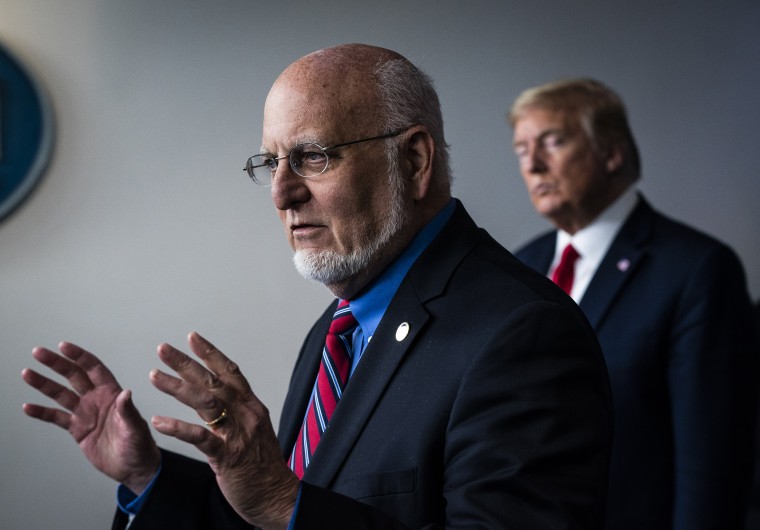On April 30, the Centers for Disease Control and Prevention’s 63-page draft of recommended guidelines for opening America leaked to the press. The CDC’s guide, which had already been submitted to the White House, reflected the current state of the science on the coronavirus and how to prevent it from spreading in communities once lockdown measures end. If implemented, it would have offered some of the most precise guidance the public had received since the COVID-19 pandemic began.
Unfortunately, those recommendations will not be implemented. The guide was shelved by the White House before it was ever officially published.
Unfortunately, those recommendations will not be implemented. The guide was shelved by the White House before it was ever officially published, with Vice President Mike Pence’s task force complaining that the rules were restrictive and “overly specific.” The implication here was that the White House wished to avoid anything prescriptive or difficult to implement. And so instead, a much sparer and looser set of CDC guidelines for “reopening” was published online on May 14: “Communities, Schools, Workplaces and Events: Guidance for Where You Live, Work, Learn, Pray and Play.”
Want more articles like this? Follow THINK on Instagram to get updates on the week's most important political analysis
Sen, Chris Murphy, D-Conn., had previously described the White House guidance as “criminally vague.” But the contrast between the initial CDC guidelines and what actually was released demonstrates how much this ambiguity seems to be a deliberate strategy. The language of the newly published official guidelines is not simply nonspecific, it’s harmful.
For example, the new guidelines exhort schools, workplaces, public transportation and places of worship to “intensify” cleaning, disinfection and ventilation. Intensify how? What exactly does this mean? To intensify ventilation, should they open windows? Put in fans? Install negative pressure ventilation? How are they to ensure that the ventilation system doesn’t facilitate the spread of infection? Similarly, the guidelines tell workplaces to “train all employees on safety and health protocols.” But how, exactly, should they do this training? What should the content of that training be? What checks should be put in place to make sure it works?
In other words, time and again, the guidelines provide little concrete guidance for achieving their stated goals. They ask schools to “encourage” social distancing and tell child care providers to “monitor distance between children not playing together.” How is that technically possible? Between the three of us, we have nine children. It is a challenge to do this in our own households, let alone in formal childcare settings.
The guidelines are also oddly repetitive, as if cut and pasted from one document to the next. While there’s nothing inherently wrong with repetition, in this case it suggests a concerning lack of in-depth thought process. It’s hard to imagine, for example, that the guidelines for reopening workplaces are truly identical to the guidelines for reopening schools — but they are here, with the alteration of only a few words and pictures. And in some places, the words aren’t changed at all from document to document.
Also concerning, the guidelines in many places ignore the current scientific evidence. They talk about symptom checking and temperature screening (once again, without providing specific guidance for doing so). But this recommendation ignores the fact that — as has been well established, including by the CDC — at least 25 percent, and perhaps more than 50 percent, of COVID-19 infections are asymptomatic. Even the best screening procedures will not identify these cases.
Many of the recommendations linked to on this page say that they were last updated in March or April — and yet still contain recommendations to “consider” basic measures like shutting down mass gatherings of more than 250 people and seven-day leave policies for people with COVID-19 symptoms. As we and others have described, given the virus’ current prevalence and transmission rates, it will mushroom in large, closed gatherings. We know this, since a single sick person at a choir practice led to 87 percent of chorus members being infected.
With their lack of clear information and surface-level science, the guidelines are, simply, an abdication of responsibility. Over and over, they say that measures should be implemented “when and where feasible,” allowing room for those who feel that even the basic containment measures are too much of a burden. Working in hospitals across the country, we understand that local patterns of disease and testing availability will differ. However, this terminology creates a huge gap in what should be a solid matrix of safety measures intended to provide reasonable protections for the American community. The CDC is supposed to be the expert in how to message what the minimum standards and best practice guidelines should be. We no longer recognize it.
This terminology creates a huge gap in what should be a solid matrix of safety measures.
People everywhere need to know what to do and what not to do. In the absence of clarity, it will be easy for people to endanger themselves and others while still technically adhering to the CDC’s latest recommendations.
Business owners, faith leaders, teachers, summer camp directors and community members seeking the reassurance that would come from abiding by authoritative and evidence-based health guidelines will not find such clarity anywhere in these pages.
As members of our community, we know that physical distancing is not a permanent solution. As physicians and public health advocates, we know we have to do it with intention and guidance. If we do it without clarity — and if we get it wrong — we risk undoing all the hard work and sacrifice of our colleagues and our fellow Americans over the past 10 weeks.
Ambiguity in these circumstances is not neutral. It is harmful. And we deserve better.
Related:


